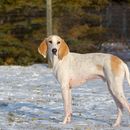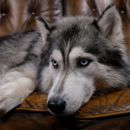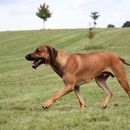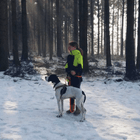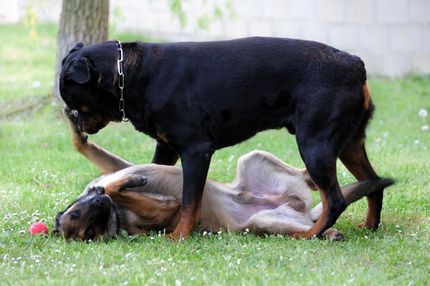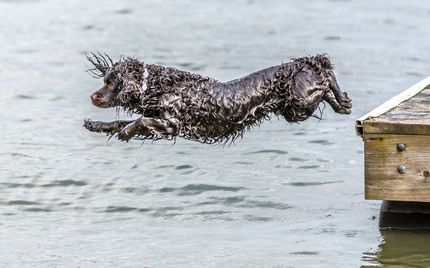What is dementia in brief?
Dementia in dogs is a disease of the brain in which the nerve cells in the central nervous system gradually die off. This disease gradually worsens and is often accompanied by mood disorders.
Other synonyms and terms
Dementia (as it is colloquially known), also known in dogs as Pageat's involvement depression and confusion syndrome, is referred to in American literature as cognitive dysfunction. This disorder is nothing other than senile dementia in the sense of human psychiatry.
Dementia in dogs
Dementia is a form of learning and memory impairment characterized by a progressive loss of cognitive, emotional and social skills. The main feature is memory impairment.
At the beginning of dementia, problems with short-term memory and retention are evident, followed by impaired orientation. In the advanced stage, those affected are less and less able to access their long-term memory, which leads to the loss of skills, abilities and knowledge acquired over the course of a lifetime. There are many different types of dementia in humans, with Alzheimer's dementia being the most common at around 60%. Neuropathological changes similar to those of Alzheimer's disease are now also known to occur in older dogs and cats. The symptoms of cognitive dysfunction in dogs and cats associated with these changes are described by the acronym DISHA:
- Disorientation/confusion: restlessness, forgetfulness, decreased learning ability, impaired cognition, increased anxiety
- Interaction: altered interaction behavior (increased interest or disinterest) of the animal with humans or other pets
- Sleep-wake rhythm: changes - longer sleep phases during the day and/or restlessness at night
- House uncleanliness: uncontrolled urination and defecation in the house, lack of house-training
- Activity: reduced or increased activity of the animal
How does dementia develop?
Alzheimer's is the most common form of dementia (around 70%) and is often influenced by genetic factors. An error in a protein called β-amyloid precursor on chromosome 21 can cause harmful substances called amyloid peptides to accumulate in the brain. These peptides form so-called plaques, which contain parts of nerve cells and altered proteins. These plaques also occur in people with Down's syndrome (trisomy 21).
Other genetic defects, such as ApoE and presenilin 1 and 2, as well as external influences such as toxins, can also lead to the formation of these harmful amyloid deposits. These deposits activate certain receptors (such as RAGE and scavenger receptors) that generate oxygen radicals and increase the calcium concentration in nerve cells, which promotes their death.
Microglial cells, which are responsible for immune defense in the brain, react to these deposits by releasing signaling substances such as NO, prostaglandins, cytokines and TNF α, which leads to inflammation and further damage in the brain.
There are many other causes of dementia, including
- Vascular dementia: circulatory problems in the brain lead to damage.
- Parkinson's disease and Huntington's disease: These neurodegenerative diseases can also lead to dementia.
- Frontotemporal dementia: Affects mainly the frontal and temporal lobes of the brain, leading to changes in behavior and personality.
- Dementia with Lewy bodies: This form is characterized by abnormal protein deposits in the brain.
- CADASIL: A hereditary disease that leads to repeated strokes and eventually dementia.
- Vitamin B1 deficiency: A deficiency of this vitamin can also cause dementia.
- Infections: Viruses, bacteria or prions can damage the brain and lead to dementia.
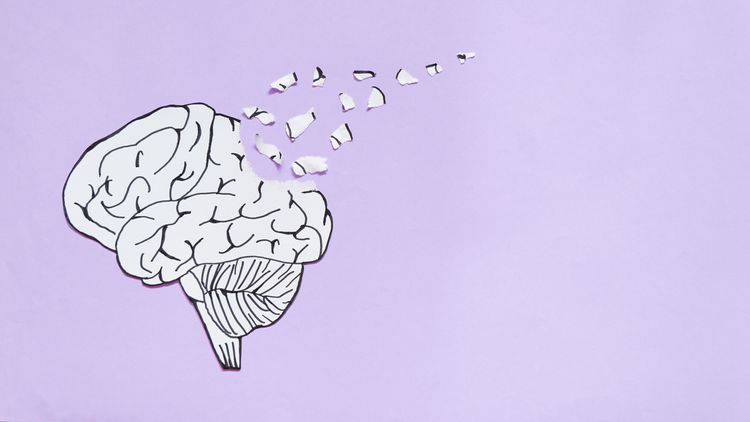
What happens as a result?
Nerve cell death reduces the concentration of important neurotransmitters (such as acetylcholine, noradrenaline, serotonin and somatotropin), which leads to a loss of brain function . The disease begins with memory loss, laxity in personal hygiene, confusion and poor decision-making. As the disease progresses, anterograde amnesia (a memory disorder in which new memories can no longer be formed after the onset of the disease) and later motor deficits such as speech disorders, ataxia and hyperkinesia occur.
Diagnostic criteria
This disorder in middle-aged and older dogs is characterized by almost daily signs of impaired cognitive function for at least one month with the following symptoms:
- Spatial disorientation: difficulty finding the correct place or exit from a room or the house; standing on the wrong side of the door; getting lost and standing at the neighbor's door; choosing a passageway that is too small and insisting on it.
- Temporal disorientation: change in day-night activity pattern without changes in sleep cycle and sleep duration.
- Disruption of habits and routine activities: problems with walking or uncleanliness.
- Disruption of memory: Repeated exploration of objects or people; expecting food again shortly after a meal.
- Disturbance in symbolic recognition: Loss of expected behaviors or occurrence of unexpected behaviors toward familiar people or objects; no recognition of people or objects.
- Disorder in the concept of object permanence: lack of interest in an object that has disappeared from view.
- Disorder of learning ability and social skills: Loss of learned behaviors, forgetting signals, reduced motivation and ability to concentrate, aggression.
Additional symptoms
Dogs with dementia may show additional symptoms that affect their behavior and orientation. A common sign is confusion, which manifests itself in haphazard wandering and sudden stops, as if the dog has forgotten its destination. Ambivalent behavior, such as growling when being petted, can also occur. Some dogs show infantile behaviors, such as exploring things as if they were puppies. Repetitive or stereotypic behaviors such as constant wandering and vocalizing, especially at night, are also typical.
Another symptom is dullness, which manifests itself in difficulty or slowness in responding to simple signals such as their own name or commands such as "sit". Sphincter function may also be impaired, causing the dog to defecate suddenly and uncontrollably, regardless of time and place, which is known as enuresis (involuntary urination) and/or encopresis (involuntary defecation).
In addition, panic attacks and a complete absence of play behavior may occur, indicating a progressive loss of enjoyment of life and mental activity.
Specifying the type
When specifying the type of dementia in dogs, various factors can be taken into account. The onset of symptoms can be sudden or slow (progressive), and the disease can occur early or late in the dog's life. Dementia is often accompanied by an affective disorder, such as chronic depression, anxiety disorder or hyperactivity. Sometimes the onset of dementia is related to a specific disease, physical or psychological trauma, anesthesia, a neurological or endocrine disorder, or the loss of a social position or regular activity, such as working as a sport or service dog.
Importantly, the disturbed behaviors are not the result of a primary sensory disorder such as deafness or blindness, nor are they caused by an organic disease. This helps to distinguish dementia from other possible causes of behavioral changes in dogs.

Is my dog affected?
Many dogs may be affected by dementia more often than is generally assumed. Often owners tend to view the symptoms as a normal part of the ageing process and assume that these signs are untreatable. For this reason, they often do not share their observations and concerns with the vet, which can lead to the condition going undetected.
What can be done about it?
While there is no cure for CCD (canine cognitive dysfunction), early diagnosis and intervention can effectively manage symptoms and improve prognosis. The key to a better prognosis lies in early detection and treatment.
Since many conditions can present with symptoms similar to CCD, it is important to consider a variety of differential diagnoses and comorbidities when evaluating potential cases.
The most effective therapy for CCD has been shown to consist of a combination of management approaches, such as environmental modifications, dietary changes and the use of nutraceuticals.
Phytotherapeutic agents
Gingko is often used to treat brain performance and cerebral circulatory disorders in dogs. It can also be helpful for dementia, depressive moods, dizziness and headaches. In addition, gingko is used to improve circulatory disorders in the legs.
Sources and relevant links
Schneider B, Ketter D (2016). Verhaltensmedizin bei Hund und Katze. 1. Auflage. Schattauer GmbH.
Silbernagl S, Lang F (2019). Taschenatlas Pathophysiologie. 6., vollständig überarbeitete Auflage. Thieme.
Baumgärtner W, Gruber A (2020). Spezielle Pathologie für die Tiermedizin. 2., aktualisierte Auflage. Thieme.
Breves G, Diener M, Gäbel G (2022). Physiologie der Haustiere. 6., vollständig überarbeitete und erweiterte Auflage. Thieme.
Brendieck-Worm C, Melzig M (2021). Phytotherapie in der Tiermedizin. 2. Auflage. Thieme.
Schroll S, Dehasse J (2016). Verhaltensmedizin beim Hund. 2., überarbeitete und erweiterte Auflage. Enke Verlag.
Zurr D (2022). Verwirrtes älteres Tier – was tun?. Zeitschrift für Ganzheitliche Tiermedizin.




